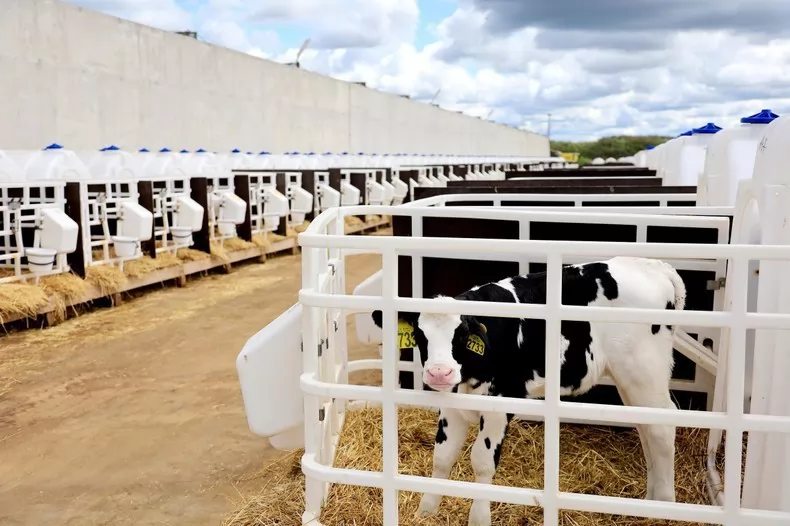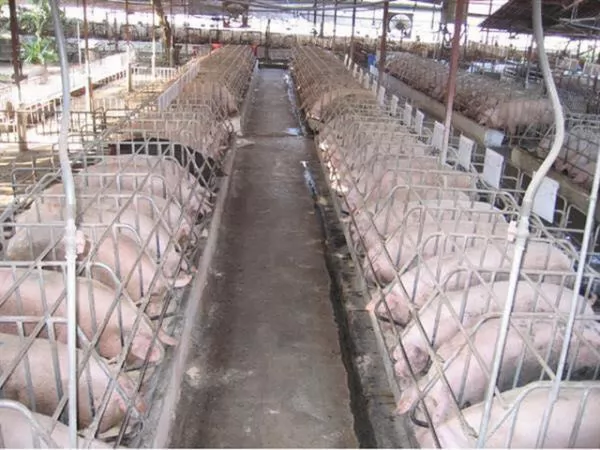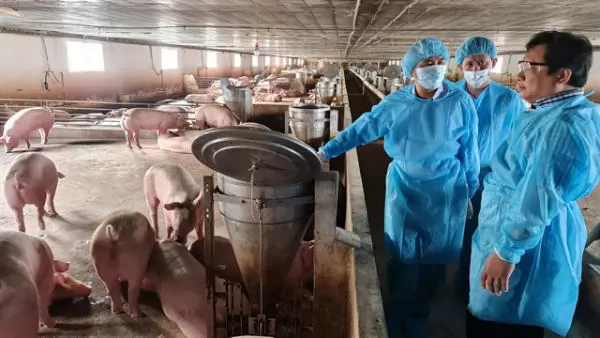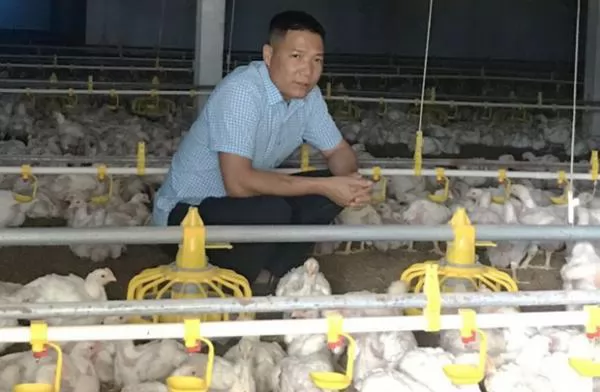Exploiting potential of dairy industry

Fresh milk production in the first six months of 2023 reached 662,800 tonnes.
In recent years, Vietnam’s dairy industry has gained many positive results, with the development of a number of closed chains from production to consumption.
Fresh milk production in the first six months of 2023 reached 662,800 tonnes, up 8.4%. The exports of milk and dairy products reached 65 million USD, up 9.9% over the same period last year. However, to fully exploit the available potential, the dairy industry needs to carry out more effective solutions in the near future.
Tong Xuan Chinh, Deputy Director of the Department of Livestock Production under the Ministry of Agriculture and Rural Development, said the country’s dairy industry is growing rapidly in both quantity and quality. The industry set the target of producing 1.7-1.8 million tonnes of milk in 2025 and about 2.6 million tonnes in 2030, with the average consumption of fresh milk per person to reach 16-18kg by 2025 and 24-26kg by 2030.
Production linkages between dairy farmers and processing enterprises are increasingly connected and several localities have promoted milk production in chains successfully. For example, in Hanoi, the International Dairy Products Joint Stock Company (IDP) built a chain of linkages between husbandry and consumption of dairy products with many dairy households signed consumption contracts with the company.
Production linkages between dairy farmers and processing enterprises are increasingly connected and several localities have promoted milk production in chains successfully.
In Ha Nam Province, the dairy farming model of Nguyen Van Khu, Director of Chuyen Ngoai Dairy Cooperative in Duy Tien District, currently has a total herd of 150 cows, 110 of which are for exploiting milk. In addition to covering all expenses and earning good profits, his family also has savings. Furthermore, a number of dairy farms have applied high technology such as automatic cool barn system according to international standards, and organic farms applying European organic standards of TH True milk and Vinamilk.
In fact, Vietnam's milk and dairy products have been trusted by domestic consumers and many countries in the region, so have been exported to dozens of countries and regions around the world.
According to experts, besides the good aspects, the dairy industry in Vietnam still faces some shortcomings that need to be overcome including the small area of arable land to grow grass for cows, the difficulties in the processing of roughage, green forage, and agricultural by-products for dairy cows is still difficult, and there is a lack of technology to preserve and process milk in both households and farms.
Some companies and corporations have made heavy investment in dairy cows, but raw milk production is not enough to meet the market's demand. Farming is still the mainstay, and the livestock production process is not closed, causing difficulties for cow raising households. In order to remove these bottlenecks, many people think that it is necessary to continue to innovate strongly in production, scale, technology and consumption market. It is essential to focus on solving weaknesses in productivity, product quality, food hygiene and safety, epidemics, and environmental pollution. The land fund should be planned for large livestock raising.
The encouragement of all economic sectors to invest in large-scale dairy farming, applying technological advances, processing and trading at all stages in the value chain needs to be promoted. It is necessary to import the best breeds of cows from developed countries for transfer and implementation of the dairy cow breeding programme to select and evaluate the nuclear herd and crossbreed them with high-yielding dairy cow semen to be transferred to regions with favourable conditions for dairy and processing milk. The country also should absorb advanced technologies of other countries for production, processing, selection, evaluation, wearing ear numbers, breeding books, and applying informatics in cow herd management. The companies also need to resolutely cull cows with low productivity and poor reproductive and breeding ability.
The branding for dairy breeding should be strengthened. In addition, businesses are encouraged to invest in factories producing total mixed ration (TMR) and complementary feeds as well as replicate TMR feed processing models to ensure adequate nutrition and gradually improve the quality and productivity of dairy cows. A portion of inefficient rice cultivation areas should be converted to growing grass, the main food in cattle raising.
The authorities should propagate and mobilise households to raise dairy cows in key regions and communes to limit the epidemics and reduce environmental pollution. The localities should make policies to support the provision of public services in science-technology, breeding, animal husbandry technology, veterinary medicine, and farm management for dairy households, especially those with scale of 50 animals or more, to increase technical and economic efficiency.
The localities should make policies to support the provision of public services in science-technology, breeding, animal husbandry technology, veterinary medicine, and farm management for dairy households, especially those with scale of 50 animals or more, to increase technical and economic efficiency.
According to Deputy Minister of Agriculture and Rural Development Phung Duc Tien, the dairy industry still has many potentials and opportunities for development, so it is crucial to speed up the process of restructuring, gradually shifting from small-scale livestock production to farming on an industrial and farm scale, in line with local realities, and associating livestock with the processing in a diversified manner to increase the products’ added value. The synchronous implementation of these solutions will contribute to promoting the dairy industry in Vietnam more efficiently in the near future.
Anh Quang - Bao An
Translated by NDO
Maybe you are interested

Agriculture sector requests drastic measures to prevent ASF recurrence
HÀ NỘI — The Ministry of Agriculture and Rural Development has issued an official document to request 20 provinces and cities to take drastic and synchronous measures to prevent and control African swine fever (ASF).

Russia-Ukraine crisis hits local livestock industry
HÀ NỘI — Việt Nam's livestock industry is likely to be hurt due to the increase in raw materials and animal feed prices since the Russia-Ukraine conflict began, the Agribank Securities JSC (Agriseco) has said.

Hanoi villagers turn barren lands into profitable farms
Hanoi (VNA) - Farmers in Hanoi's suburb district of Chuong My are turning barren, abandoned pieces of land into productive farms that yield high profit annually.





